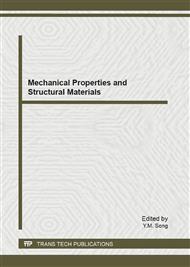p.432
p.437
p.441
p.445
p.449
p.455
p.461
p.465
p.469
Study on Photoelectric Performance of Organic Light Emitting Device
Abstract:
Organic light emitting devices (OLED) with the structure of ITO/TPD(30nm) /Alq3 (40nm)/LiF/Al were prepared by vacuum thermal evaporation method. The influence of relative humidity and LiF buffer layer to the photoelectric performance of OLED was observed as well. It showed that the device had good photoelectric performance under relative humidity 40%, also had very good rectifier characteristics, the starting voltage was 12V, maximum luminous efficiency was 1.74cd/A. With the injection of LiF layer, the device electro-optical properties had marked improvement, the starting voltage dropped to 10V, brightness increased to 2450 cd/m2, maximum luminous efficiency was 2.34 cd/A.
Info:
Periodical:
Pages:
449-452
Citation:
Online since:
October 2012
Authors:
Price:
Сopyright:
© 2012 Trans Tech Publications Ltd. All Rights Reserved
Share:
Citation:


